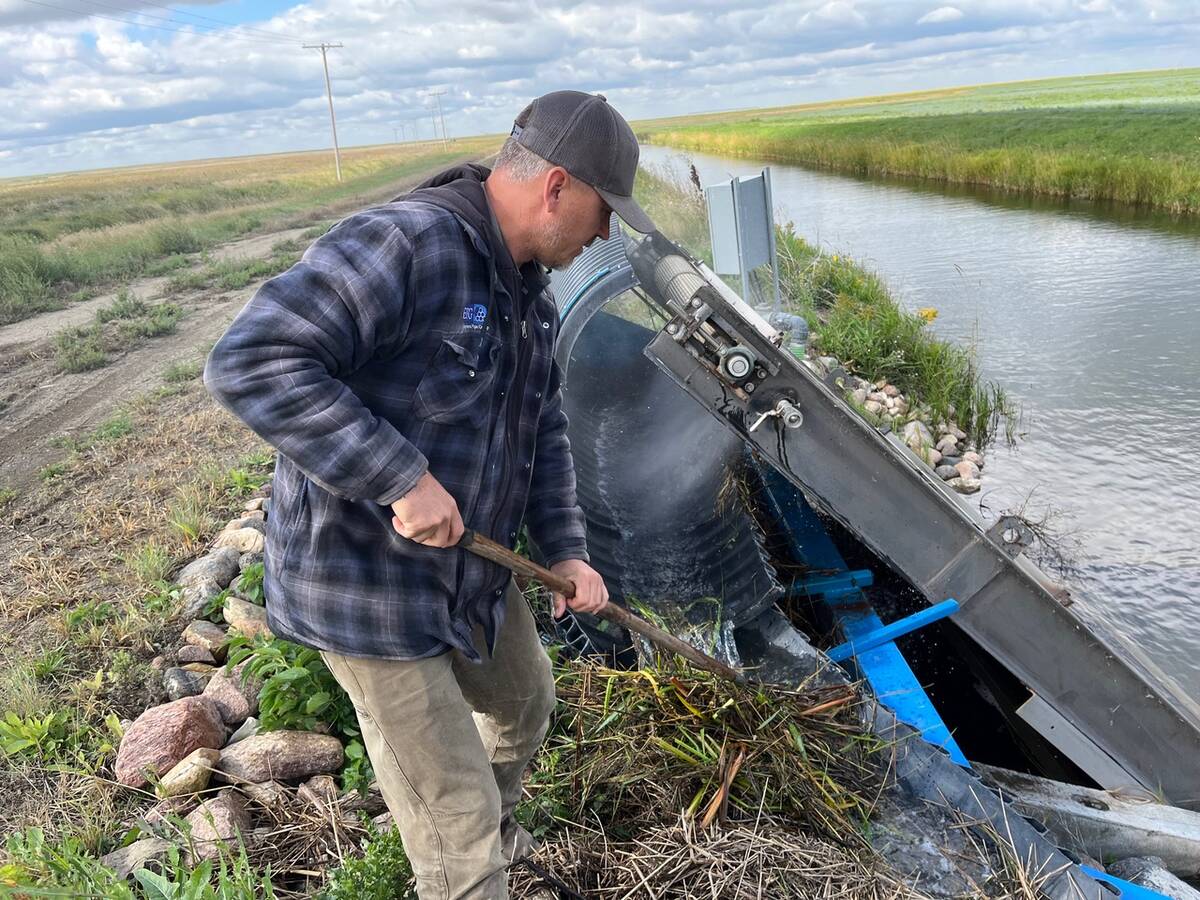Locally processed food not under federal system
BANFF, Alta. — Canada’s new food safety act is promising improvements, but the legislation has shortcomings, according to one critic.
The Safe Foods for Canadians Act promises to streamline the inspection system and protect the food supply.
There is value to this but it will not protect all Canadians because many will go for organic, local or provincially processed foods rather than products from an inspected federal facility, said Rick Holley of the University of Manitoba and a member of the Canadian Food Inspection Agency advisory committee.
Read Also

Saskatchewan farmer uses tile drainage to manage water
The integration of both irrigation and tile drainage results in higher yields, water efficiency, improved soils and less nutrient runoff, says one producer.
There will still be groups within provinces producing foods without rigorous inspection, he said at the Canadian Meat Council annual meeting in Banff May 29-31.
The government is proposing a science- and risk-based framework that is based on the right outcomes.
“I hope it works,” he said.
“If government continues to advertise the Safe Food for Canadians Act as being the vehicle from which we will see a major increase in the confidence we had in the safety of food products, they are mistaken,” he said.
Food borne illnesses and death still occur with alarming frequency at a cost of between $3 and $13 billion per year. Canada tolerates this and other issues associated with failures with food safety.
He argues it is important to identify which products cause the most illness and deal with them more diligently.
“We have to be proactive and develop meaningful programs that will address those issues that affect Canadians the most.”
Mary Komarynsky, executive vice-president of the CFIA, said the new act is based on food safety principles from Codex Alimentarius, relevant ISO standards and other international codes.
“In some cases we will try to demonstrate equivalency in food systems but there are times when we will need a Canadian approach.”
She promised they will focus on where the risk is greatest.
“Our efforts in identifying risk will be more targeted,” she said.
No system is foolproof and there will always be emergencies such as the beef recall at XL Foods last year in which the Brooks, Alta., plant was closed until it could prove it met all food safety standards.
“When we have such a high visibility event, communication is key,” she said, adding a risk communication group has been established with the meat council to address future crises.
Openness is necessary and she promised more real time information will be added to the agency’s website as part of the goal to generate confidence in the Canadian food system.
Canada has a strong food supply but one outbreak can affect everyone, said the national inspection manager for the agency.
Every plant needs best practices to avoid contamination but it also needs a plan in case of an outbreak of something like listeria or E. coli, said Tom Graham.
Food recalls are becoming more common and every company needs to develop a food safety culture that is not built to please the inspectors or customers, but enforced because it is the right thing to do for food safety.
“Food safety was once ranked in the middle among consumer surveys. Now it is among the top three considerations. Bad practices in one plant can affect the reputation of the entire food industry,” he said.
In the event of a major recall, a processor should have an incident management plan that is separate from normal steps taken each day to ensure good sanitation.
About 90 percent of food recalls are for undeclared allergens rather than bacterial contamination. However if there is a contamination problem, it is important to act quickly.
“You must limit the damage by stopping the incident from becoming a crisis,” he said.
The incident team should include staff from quality assurance, finance and human resources. Information on technologies and machines should be readily available.
Identify a good communicator who can show there is genuine understanding of the situation of those affected and that the situation is under control.
“Not having that communicator can be a problem,” he said
CFIA has information on how to conduct a recall. A company involved in one should also have a review to determine how it happened and what improvements are needed.
















